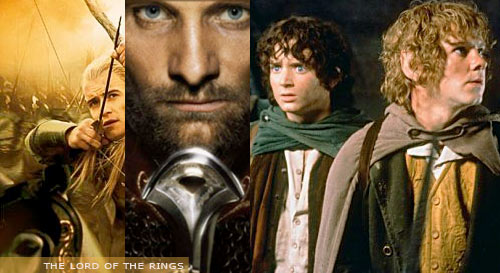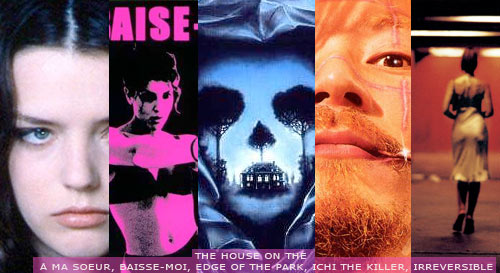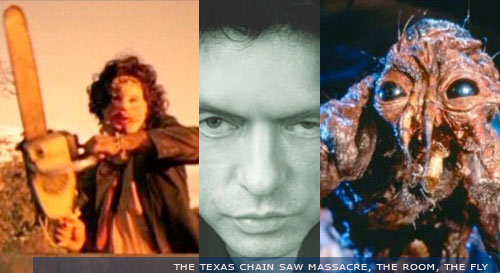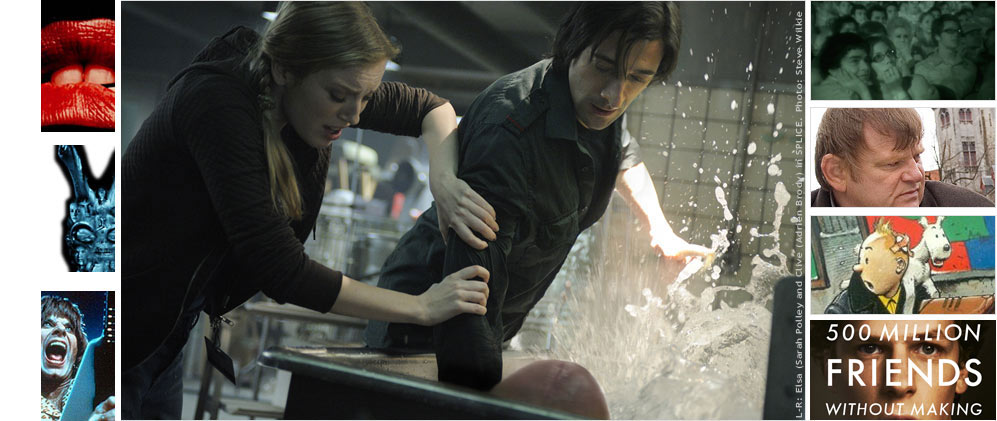CULT MOVIE RESEARCH:
Research Background
Although every time feels like the first,
We are not novices at this kind of thing.
In a broad sense, this project is part of a series of efforts to chart cult film, fandom, and their impacts on and importance for the outlook and status of popular culture today.
This page is intended to give you some ideas of our credentials and our beliefs.
Previous Research
Here are some examples of our previous efforts, so you can check our credentials:

Lord of the Rings Audience Research Project. You may have heard about it. In 2003-04, a team from Aberystwyth University in Wales did an online survey of responses to The Lord of the Rings: The Return of the King. The project was directed by Professor Martin Barker, with Ernest Mathijs and Kate Egan as immediate collaborators. The entire network of the project encompassed 20 countries, and 14 language versions of the questionnaire. The film won a record number of Academy Awards, and the survey garnered about 25,000 responses. It made the project the largest film audience research project thus far.
Core outcome/publication: Barker, Martin and Ernest Mathijs (eds) (2007), Watching the Lord of the Rings: Tolkien’s World Audiences, New York: Peter Lang Publishers, 297 pages.
More information: the database, user guide, original questionnaire, and more information, is available by clicking here.
British Film Institute Cult Film Survey: in 2011, Ernest Mathijs and Xavier Mendik conducted a broad poll of contemporary cult films, asking audiences if they thought any of twenty-five films listed as ‘new cults’ were, in their minds, actually deserving of that reputation. The film winning the poll was included as the 100th cult film in the Screen Guide 100 Cult Films, published by the British Film Institute and Palgrave-MacMillan.
Core outcome/publication: Mathijs, Ernest and Xavier Mendik (2011), 100 Cult Films. London: Palgrave-MacMillan/British Film Institute.
More information on the project, and the survey itself, can be found HERE.
Big Brother Audience Research Project: there were two projects on the viewers of the reality tv-show Big Brother, one directed by Ernest Mathijs (with Wouter Hessels and Lara Verriest as collaborators), and one directed by Janet Jones (with Daniel Chandler and Merris Griffiths as collaborators). Combined, the two projects surveyed about 4,000 viewers of the show (mainly the first two seasons).
Core outcome/publication: Mathijs, Ernest & Janet Jones (eds) (2004), Big Brother International: Formats, Critics, Publics, London: Wallflower Press, 261 pages.
Ginger Snaps Audience Research Project: initially, this project, directed by Xavier Mendik, with collaborators Martin Barker and Ernest Mathijs was commissioned by the British distributors of the sequel and prequel of Ginger Snaps. They wanted audience research that reflected the popularity of the franchise, to culminate as an extra feature on the DVD. The project quickly went beyond that, and included surveys of female only audiences, and of mixed audiences, in the United Kingdom, Belgium, South-Korea and Canada.
Core outcome/publication: Barker, Martin, Ernest Mathijs and Xavier Mendik (2006), ‘Menstrual Monsters: the Reception of the Ginger Snaps Cult Horror Franchise, Film International, 21 (vol 4 nr 3), 68-77.

Audiences and Receptions for Sexual Violence in Contemporary Cinema Research Project. This project was commissioned by the British Board for Film Classification, the BBFC. It investigated the naturally-occurring audiences to five films – À Ma Soeur, Baise-Moi, The House on the Edge of the Park, Ichi the Killer, and Irreversible – chosen because the BBFC had cut scenes of sexual violence. The central issue for the project was to explore how audiences’ response to the films were affected by the existence of different versions of the films, and the impact of the cuts required for four of the films. The study analyzed 243 websites, 760 questionnaire responses, and 20 focus group discussions.
Core outcome/publication: Barker, Martin, Ernest Mathijs, Jamie Sexton, Kate Egan Russ Hunter, and Melanie Selfe (2007), Audiences and Receptions of Sexual Violence in Contemporary Cinema, London: BBFC.
There have been other, smaller research projects: Ernest Mathijs has researched the reception of films as diverse as Daughters of Darkness (Kümel, 1971), The Texas Chainsaw Massacre (Hooper, 1974), Shivers (Cronenberg, 1975), The Fan (Schmidt, 1983), Phenomena (Argento, 1985), The Fly (Cronenberg, 1986), Monkey Shines (Romero, 1988), Man Bites Dog (Belvaux, Bonzel, Poelvoorde, 1992), S. (Henderickx, 1998), The Wisconsin Death Trip (Marsh, 1999), Hannibal (Scott, 2001), Donnie Darko (Kelly, 2001), The Room (Wiseau, 2003), The Ordeal (Du Welz, 2004).

Our Beliefs
Every project has some concerns underpinning it. All our research projects have been influenced by the same philosophy. Here are a few of our starting points (cards on the table):
- We do not believe that popular culture is inferior to artful, or highbrow, or proper culture. We think that those who claim this are all too anxious to either gain or preserve some form of superiority over those who cannot afford the same exclusive access
- We love films, all films, all the time. We do not think they are superior to other forms of culture, but we do think they have a special reach, an easy access that makes them highly valuable, as a subject for study, but also as a social force.
- We believe that engagement with cultural products, in forms of fandom or cultism, is not just a form of slavish consumption (don’t get us wrong; it can be), but also a form of enrichment, personal as well as social. In fact, our research is often done exactly to find out where the distinction lies.
- We do not believe that disturbing material on screen has only negative effects. If it has effects (and we’re not too sure it does so blanketly), it has all kinds of effects: good, bad, silly and significant, dumbing down as well as emancipating, inciting violence as well as inciting kindness.
- We do not believe that by asking questions about films and audiences we should be seen as either for or against the films or the viewers. While sympathetic to the audiences we study, we remain objective. Above all, we respect the people we study, and their opinions. It’s a free world.










